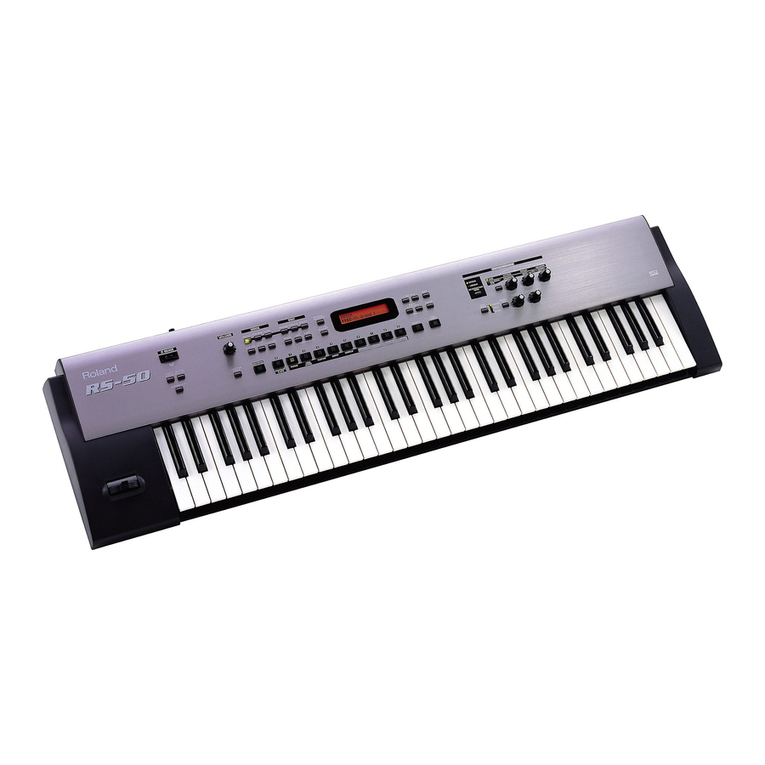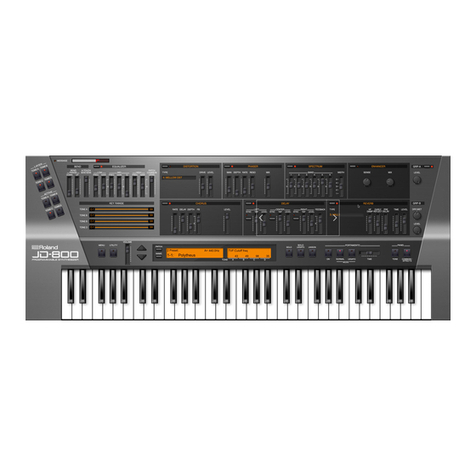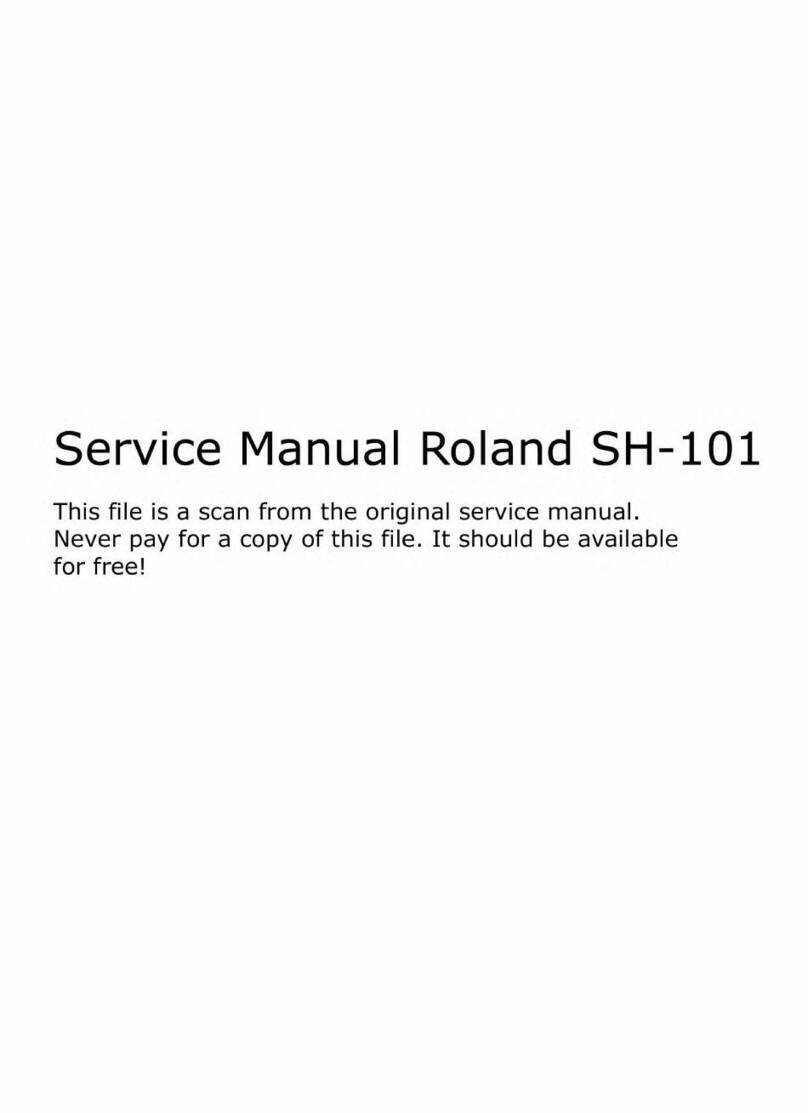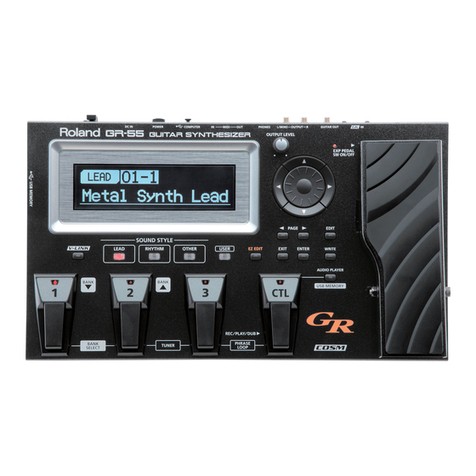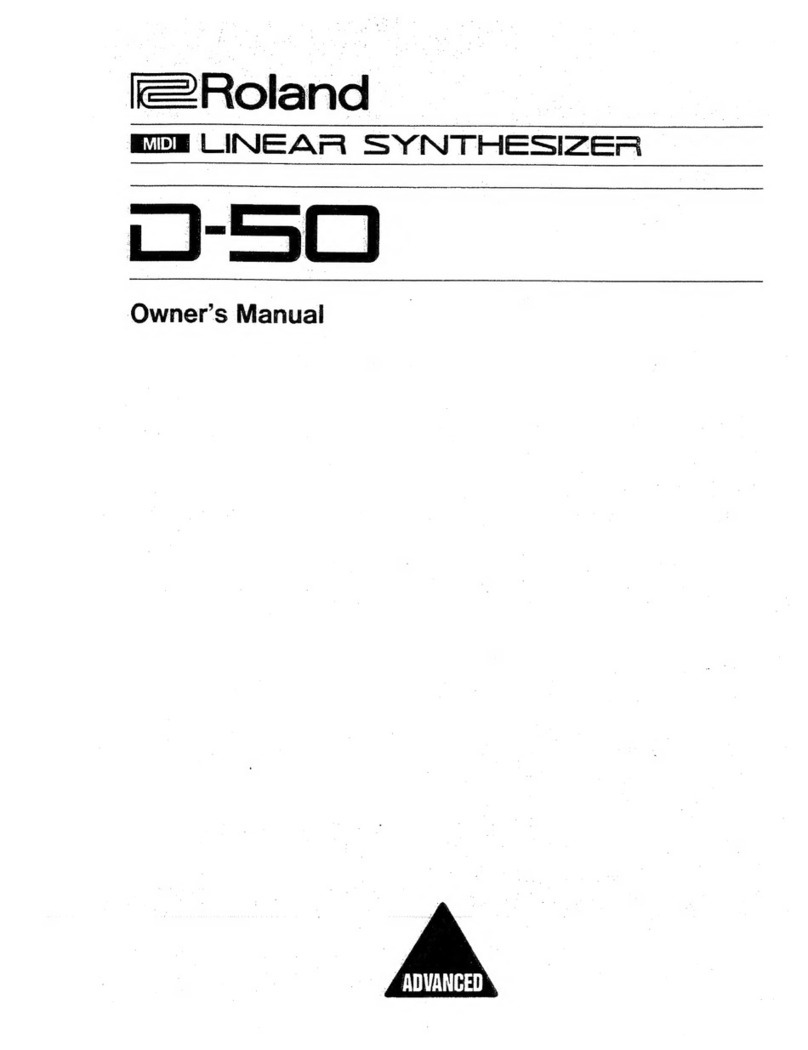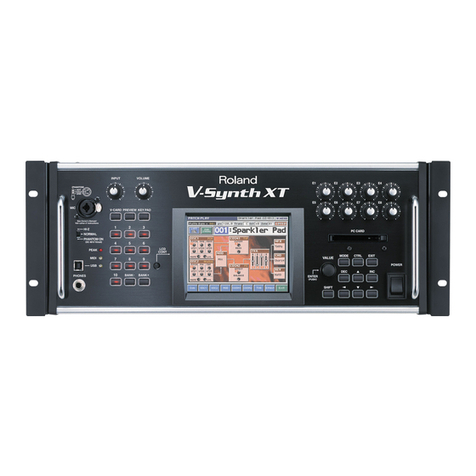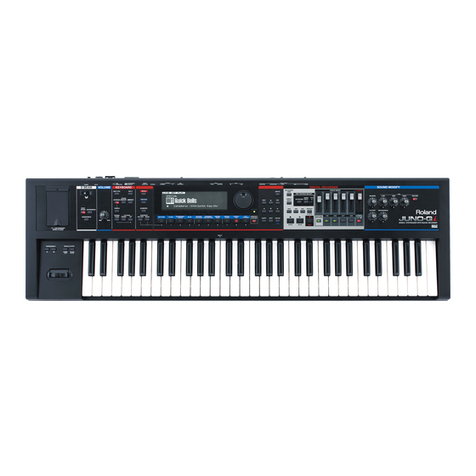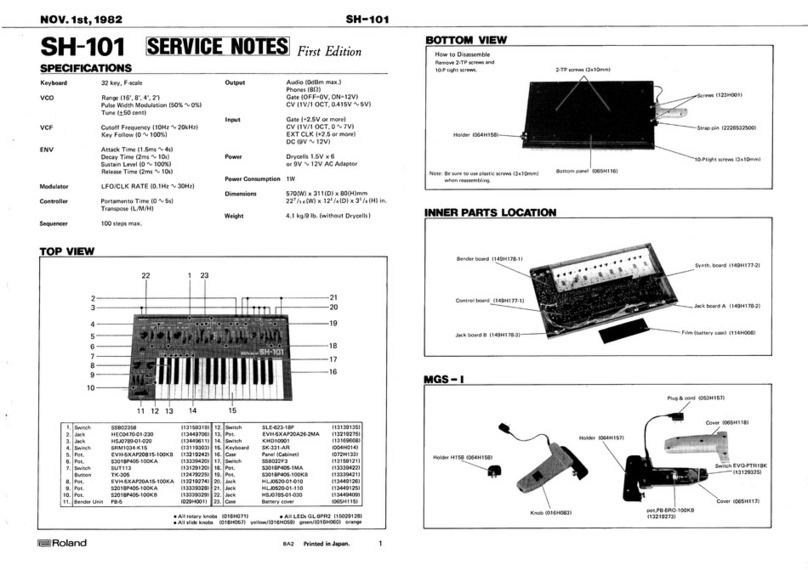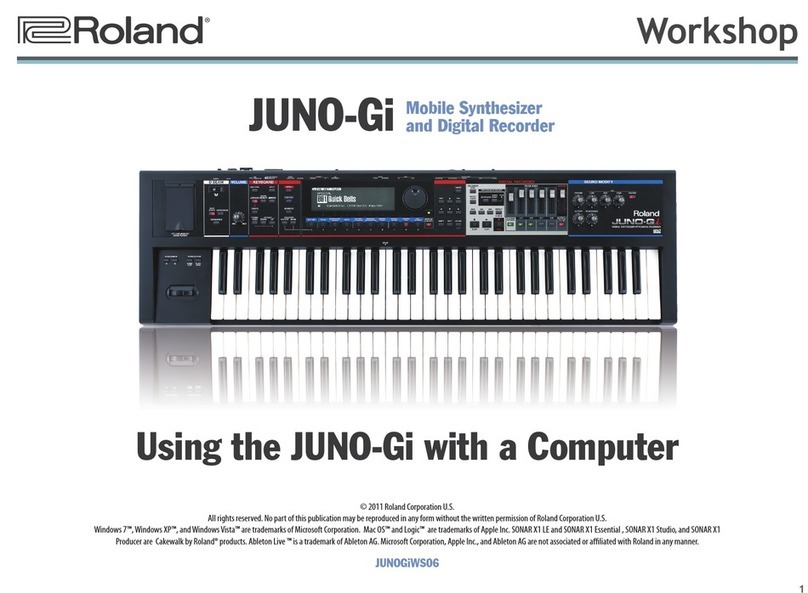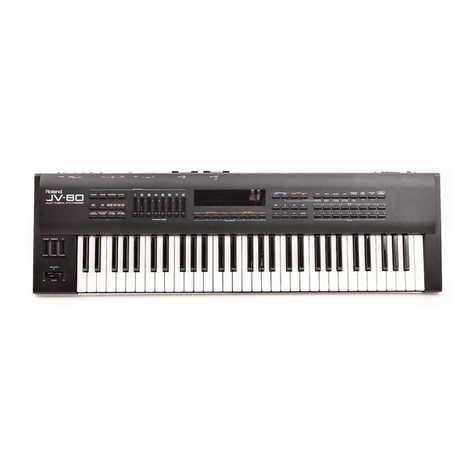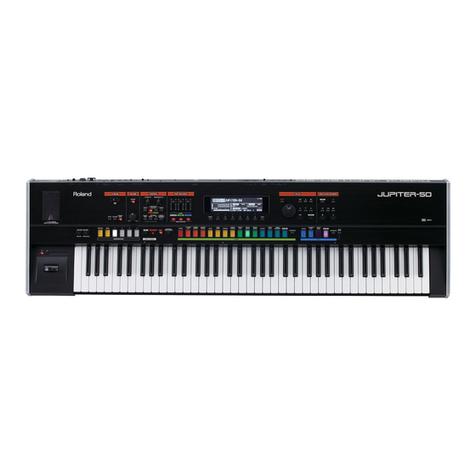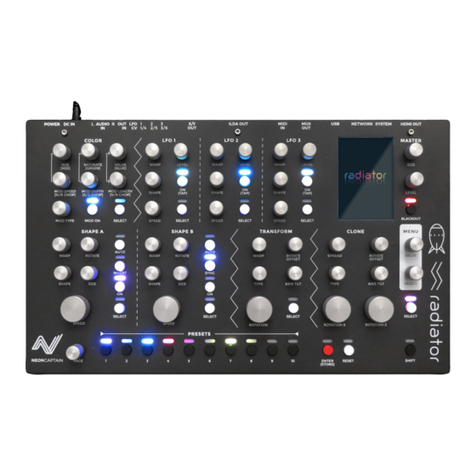
©2011 Roland Corporation U.S. www.RolandUS.com TBS278
®ÂØÒňήGR-55 Guitar Synthesizer
1
Welcome
Congratulations on the purchase of your Roland GR-55 Guitar Synthesizer. This TurboStart
contains step-by-step instructions that’ll quickly introduce you to some of the GR-55’s
features.
Making Connections
To protect your equipment and your ears, start out with the GR-55 turned off, and turn
down the gear to which you’re connecting the GR-55.
1 Connect one end of the 13-pin cable to the GK pickup.
2 Connect the other end of the 13 -pin cable to the GK IN jack on the back panel of
the GR-55.
3 With a standard guitar or instrument cable, connect the L(MONO) OUTPUT on
the GR-55 to the input of your amp, mixer, or PA. Or if you prefer, connect your
headphones to the GR-55’s PHONES output.
Note: Use the GR-55’s GUITAR OUT jack to send your dry guitar signal to a different amp if
you’d like—none of the GR-55’s synth tones or effects come out of the GUITAR OUT jack.
4 Set the GK-3’s three-position select switch to its MIX position.
5 Now turn on the GR-55 and your amp.
Setting Sensitivity
Setting the sensitivity in the GR-55 for the GK divided pickup is crucial for optimal playing
results. Use the following steps to adjust the pickup sensitivity.
Note: There are many sensitivity parameters in the GR-55 that can have a significant
impact on the overall performance. The following steps adjust the basic sensitivity of each
string. We strongly recommended you refer to the GR-55’s Owner’s Manual for more details.
1 Press the EDIT button.
2 Press the PAGE 4 button to select the SYSTEM tab shown at the top right of the
display.
3 Press the cursor 3 button to select “GK SETTING,” and then press ENTER.
4 Press cursor 5 or 6 to select “PU TYPE.”
5 Turn the dial to select the pickup type that’s installed on your guitar: GK-3, GK-2A,
or PIEZO, etc.
6 Press PAGE 4 twice to select the SEN tab.
7 Cursor down to “1ST STRING SENS.”
8 Play the high E string repeatedly with moderate force.
9 Turn the dial on the GR-55 to adjust the sensitivity value until the level indicator
reaches the right side of the display under “NUA.”
10 Continue for each of the remaining strings by selecting them with the cursor 6
button and turning the dial to adjust the sensitivity.
11 Press EXIT twice when you’re finished to return to the Play screen. Your settings are
saved automatically.
Using the Tuner
The GR-55 features an onboard tuner that lets you quickly and easily tune your guitar.
Here’s how to use the tuner.
1 Press Pedals 2 and 3 simultaneously.
2 Repeatedly play the first—High E—string unfretted.
3 Tune the guitar until “E” shows in the center of the display and the two left and right
pointing arrows are lit. If a different letter shows in the display, continue to tune the
string until the “E” appears.
4 Repeat the tuning process for the remaining strings.
5 Press EXIT when you’re finished to return to the Play screen.
Selecting the Correct Output Setting
It’s a good idea to tell the GR-55 what you’re connected to for amplification; i.e. a guitar
amp or PA system, etc. This setting—referred to as “Output Select”—allows the GR to
internally optimize its sound for the type of system you’re using. Use the following
procedure to change the Output Selection to match your setup.
1 Press EDIT.
2 Press PAGE 4 to select the SYSTEM tab, and then press ENTER.
3 Cursor to “OUTPUT SELECT,” and then press ENTER.
4 Turn the dial to choose the desired setting.
5 Press EXIT twice when you’re finished. The new setting is saved automatically.

